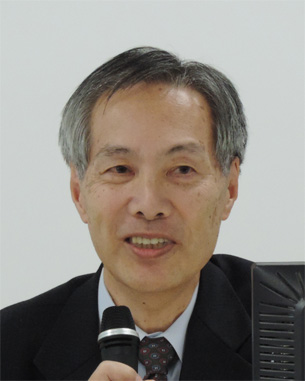
Shin Enosawa, DDS, PhD
From 2011 to 2016, worked as a project manager for the Highway Project, "Clinical research on human embryonic stem (ES) cell formulations for the treatment of congenital metabolic disorders giving rise to severe hyperammonemia", a research fund awarded to Dr. Akihiro Umezawa.
Nursing human progenitors in the pig spleen
Shin ENOSAWA1, Hirofumi NOGUCHI 22, Akihiro Umezawa 11, Yoshitaka MIYAMOTO 11, Michiyo NASU 11, Eiji KOBAYASHI 33.
1National Center for Child Health and Development, Tokyo, Japan; 2Regenerative medicine, University of the Ryukyu, Ginowan city, Japan; 3Kidney Regenerative Medicine, The Jikei University, Tokyo, Japan
The spleen possesses a unique vascular structure known as sinusoids, similar to those in the liver. We successfully developed a novel transplantation site for human progenitor cells within the spleen of a surgically modified immunodeficient pig (OIDP). The splenic artery and vein were cannulated to isolate the spleen from systemic circulation transiently, allowing inactivation of splenic immune cells by perfusing mitomycin c through a localized extracorporeal circulation system. After thorough rinsing, human iPS cell-derived hepatocyte-like cells (iPS-HLCs) or human islet progenitor cells were transplanted into the spleen via this route. In accordance with the OIDP protocol, the recipient underwent thymectomy and received tacrolimus, mycophenolate mofetil, and prednisolone via a gastric tube for four weeks. Human albumin was detectable in the pig serum two weeks after transplantation of human iPS-HLCs. Upon harvesting the spleen four weeks post-transplantation, colonies of the cells positive for human vimentin and albumin were identified. Similarly, quantum dot-labeled pancreatic progenitor human iTS cells, induced by reprogramming factors, were transplanted into the spleen of a modified OIDP pig. Human c-peptide was detected in the pig serum following an intraperitoneal glucose tolerance test. Histological analysis confirmed the differentiation of pancreatic progenitor cells into insulin-producing cells within the spleen. The splenic sinusoid may serve as a promising heterotopic site for cell therapy.
[1] spleen
[2] sinusoid
[3] human iPS cell
[4] human iTS cell
[5] operational immunodeficient pig (OIDP)